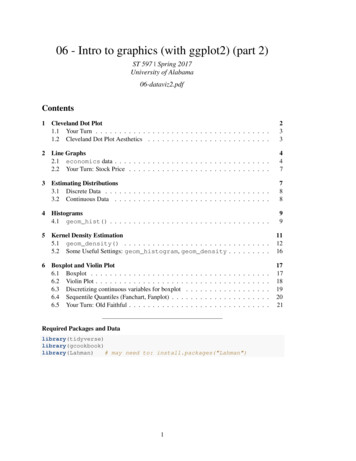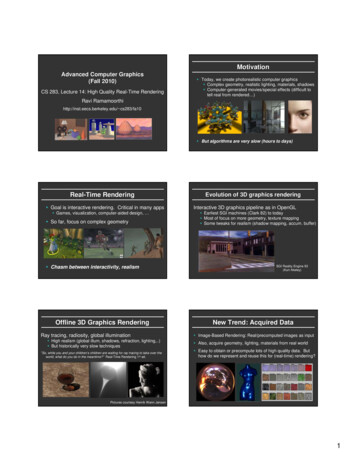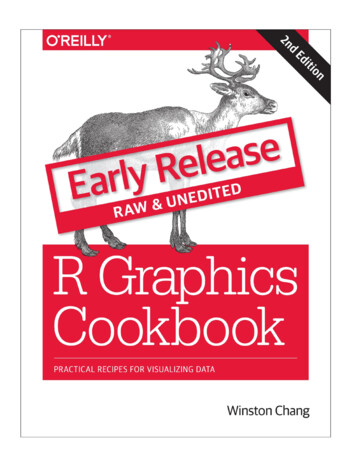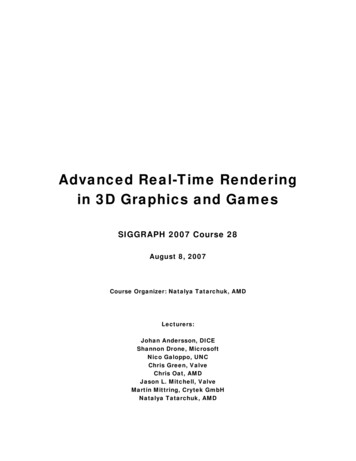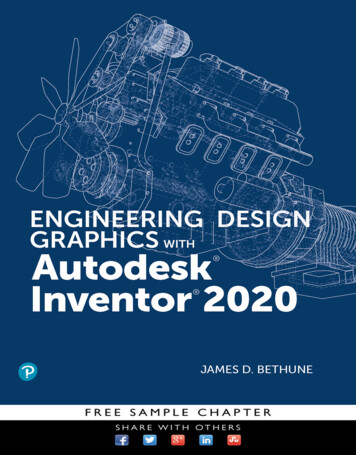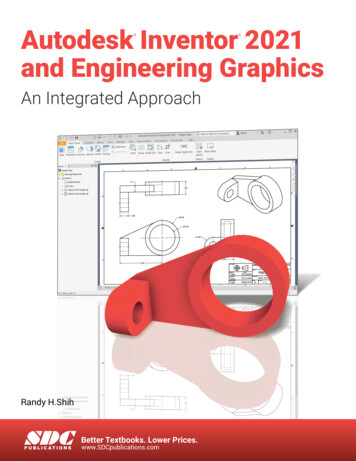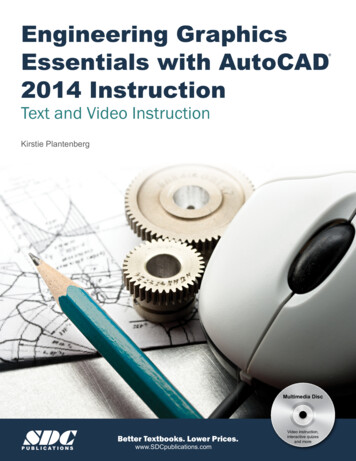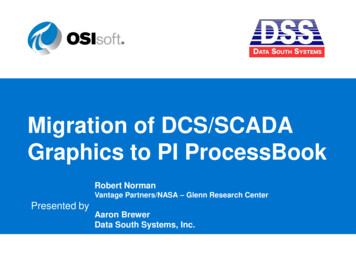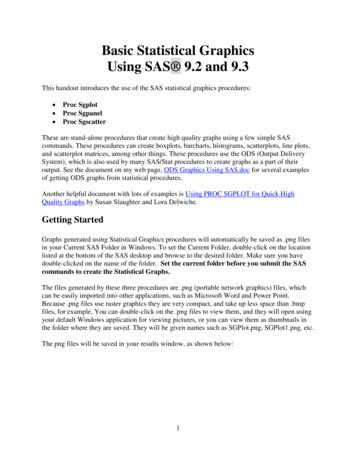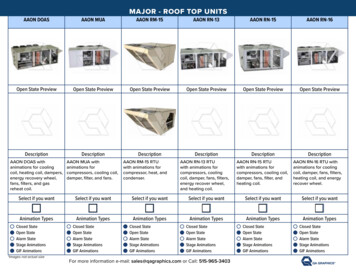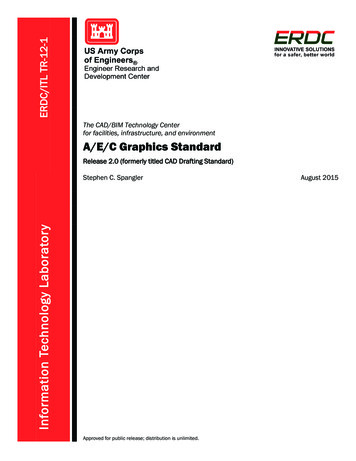
Transcription
ERDC/ITL TR-12-1The CAD/BIM Technology Centerfor facilities, infrastructure, and environmentA/E/C Graphics StandardRelease 2.0 (formerly titled CAD Drafting Standard)Information Technology LaboratoryStephen C. SpanglerApproved for public release; distribution is unlimited.August 2015
The U.S. Army Engineer Research and Development Center (ERDC) solvesthe nation’s toughest engineering and environmental challenges. ERDC developsinnovative solutions in civil and military engineering, geospatial sciences, waterresources, and environmental sciences for the Army, the Department of Defense,civilian agencies, and our nation’s public good. Find out more at www.erdc.usace.army.mil.To search for other technical reports published by ERDC, visit the ERDC online libraryat http://acwc.sdp.sirsi.net/client/default.
The CAD/BIM Technology Centerfor facilities, infrastructure, andenvironmentA/E/C Graphics StandardRelease 2.0 (formerly titled CAD Drafting Standard)Stephen C. SpanglerThe CAD/BIM Technology CenterInformation Technology LaboratoryU.S. Army Engineer Research and Development Center3909 Halls Ferry RoadVicksburg, Mississippi 39180-6199Release 2.0Approved for public release; distribution is unlimited.Prepared forU.S. Army Corps of EngineersWashington, DC 20314-1000ERDC/ITL TR-12-1August 2015
ERDC/ITL TR-12-1; Release 2.0AbstractThe A/E/C Graphics Standard has been developed by the CAD/BIMTechnology Center to document how proper hand-drafting practices canbe achieved in Building Information Modeling (BIM), Civil InformationModeling (CIM), and Computer-Aided Design (CAD). It is through thecollection and documentation of these practices that consistent modelsand drawings shall be achieved throughout the U.S. Army Corps ofEngineers (USACE), as well as other federal agencies. In the collection ofthese practices, various historical USACE District drafting manuals wereconsulted and compared against practices contained in various industryand national standards. The documentation of these practices will help toachieve both clear and aesthetically pleasing construction documents.DISCLAIMER: The contents of this report are not to be used for advertising, publication, or promotional purposes.Citation of trade names does not constitute an official endorsement or approval of the use of such commercial products.All product names and trademarks cited are the property of their respective owners. The findings of this report are not tobe construed as an official Department of the Army position unless so designated by other authorized documents.DESTROY THIS REPORT WHEN NO LONGER NEEDED. DO NOT RETURN IT TO THE ORIGINATOR.ii
ERDC/ITL TR-12-1; Release 2.0ContentsAbstract . iiFigures and Tables .viPreface . viii1Introduction . 11.11.21.31.42Acronyms . 1Background . 1Essentials of good drafting . 2Additions/revisions . 2Border/Cover Sheets . 32.12.2Border Sheets . 32.1.1Sheet sizes . 32.1.2Sheet margins . 32.1.3Border sheet areas . 42.1.4Production Data Area. 42.1.5Drawing Area . 52.1.6Title Block Area . 72.1.7Designer Identification Block . 82.1.8Revision (Issue) Block . 82.1.9Management Block . 82.1.10Project Identification/Sheet Title Block . 102.1.11Status . 12Cover Sheets . 132.2.1Owner/Designer information. 142.2.2Project/Contract information (Part 1) . 152.2.3Project rendering/Small location map area . 152.2.4Project/Contract information (Part 2) . 162.2.5 Signature Block Area . 172.2.63Small project index/A-E stamps area . 18Orientation.193.1Common . 193.1.1 Drawing sheet coordinate system . 193.1.2 Plans, elevations, and details . 193.2Horizontal . 203.2.1Project coordinate system . 203.2.2Vicinity maps . 213.2.3Maps and drawings . 213.2.4Channels, locks, and dams. 213.2.5Waterways . 22iii
ERDC/ITL TR-12-1; Release 2.03.343.2.6Levees . 243.2.7Roadways and other structures . 24Vertical . 243.3.1Column grid system . 243.3.2Numbering of floors . 253.3.3Numbering of rooms . 253.3.4Numbering of doors . 263.3.5Identification of windows . 273.3.6Numbering of stairs . 273.3.7Numbering of elevators . 283.3.8Labeling of duct. 28Drawing Symbology .294.14.2Corps Castle . 29Symbols . 304.2.1 Symbol descriptions . 304.34.2.2Symbol identifiers . 304.2.3Drawing area title . 314.2.4Elevations, sections, and details . 334.2.5Welding symbols . 35Linework . 384.3.1 Showing work conditions within a drawing . 395Drawing Annotation.415.1Text . 415.1.1General notes . 415.1.2Abbreviations . 425.1.3Capitalization . 435.1.4Orientation and placement . 435.1.5 Font . 445.1.65.26Dimensions . 475.2.1Dimension placement . 475.2.2Graphic settings . 485.2.3Dimension terminators . 485.2.4Fractions . 505.2.5Elevations . 515.2.6Graphic settings . 515.2.7Dimensioning in metric (SI) . 52Schedules .556.16.26.37Text height . 45Features of a schedule . 55Graphic settings . 55Excel schedules . 56Drawing Revisions .577.1Revision designations . 57iv
ERDC/ITL TR-12-1; Release 2.07.27.3Revision graphics . 57Revision (Issue) Block . 58References .61Report Documentation Pagev
ERDC/ITL TR-12-1; Release 2.0Figures and TablesFiguresFigur
National Association (SMACNA), the General Services Administration (GSA), and the National Institute of Building Sciences (NIBS) Facility Information Council began an effort to develop a single CAD standard for the United States. Working together, these organizations agreed to d evelop

